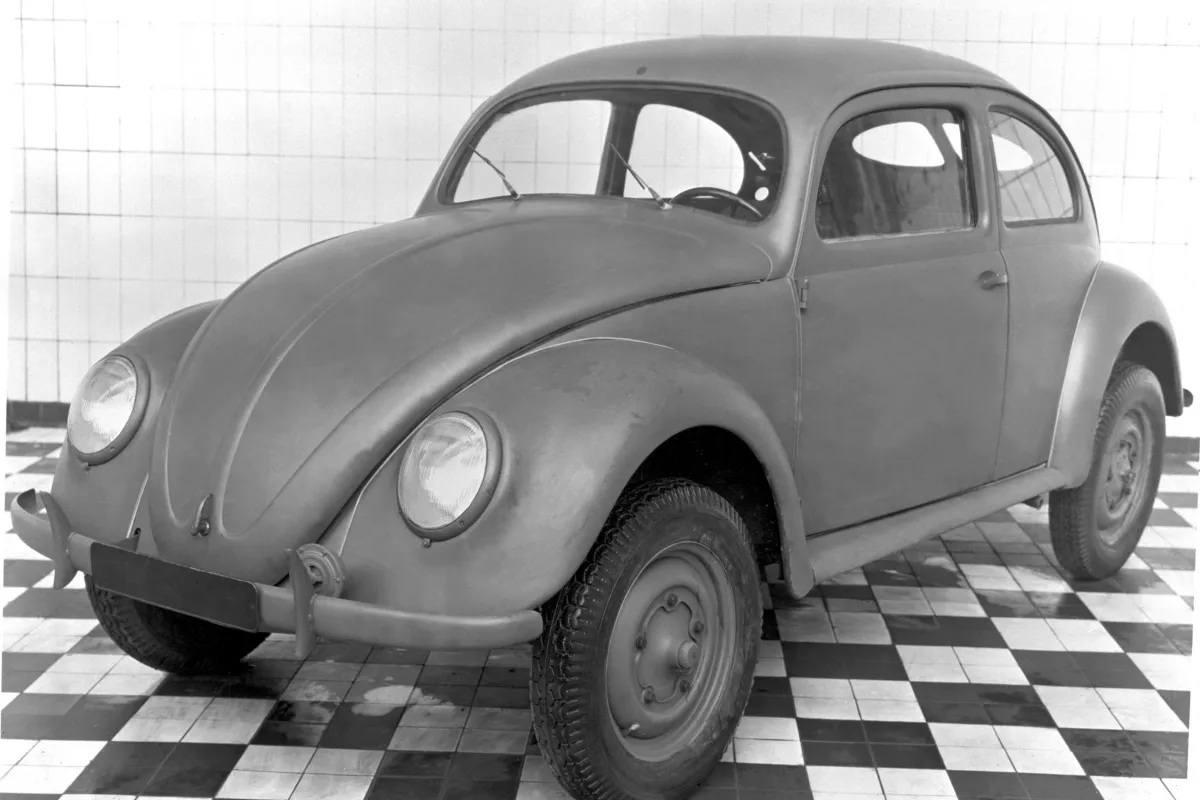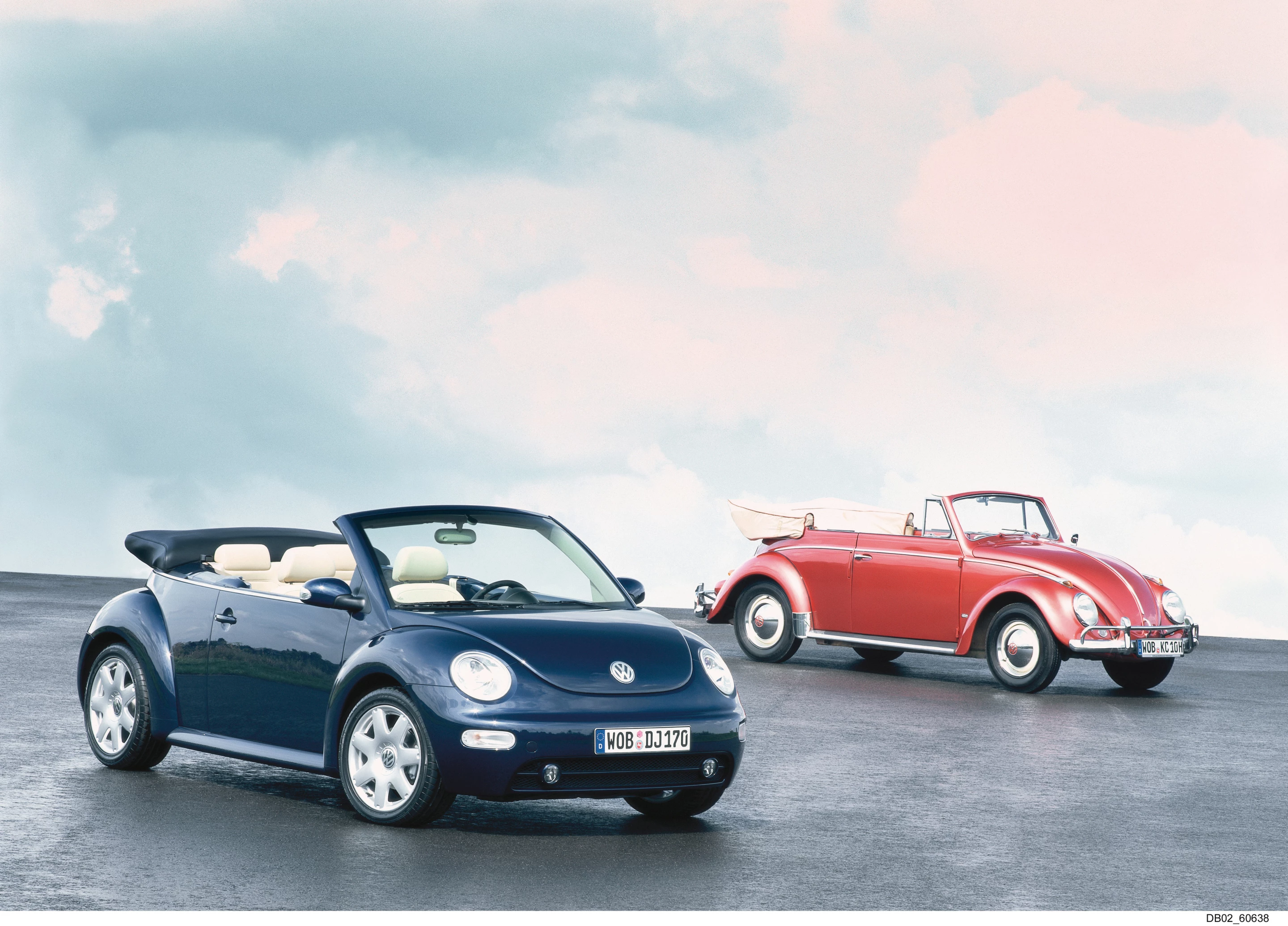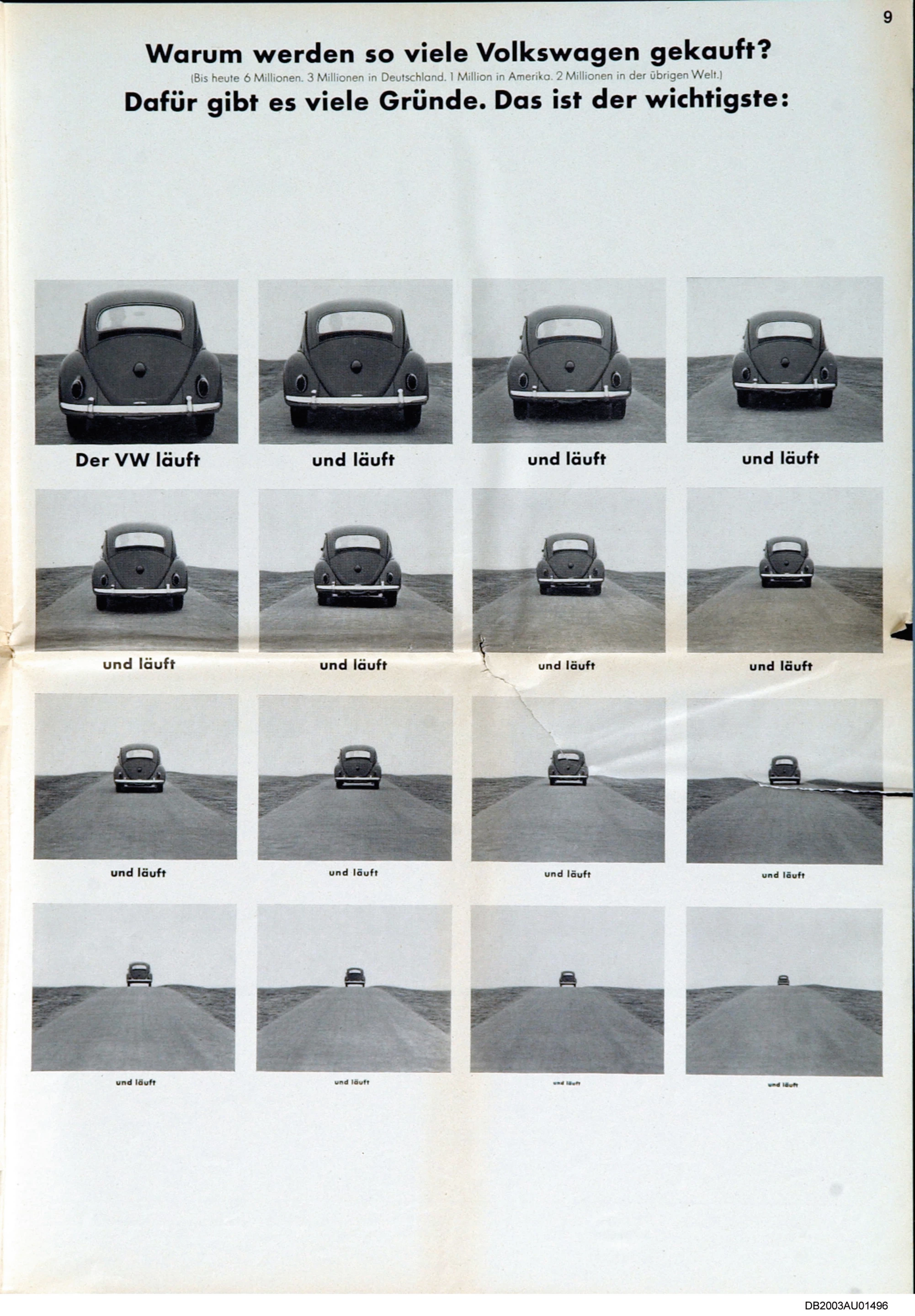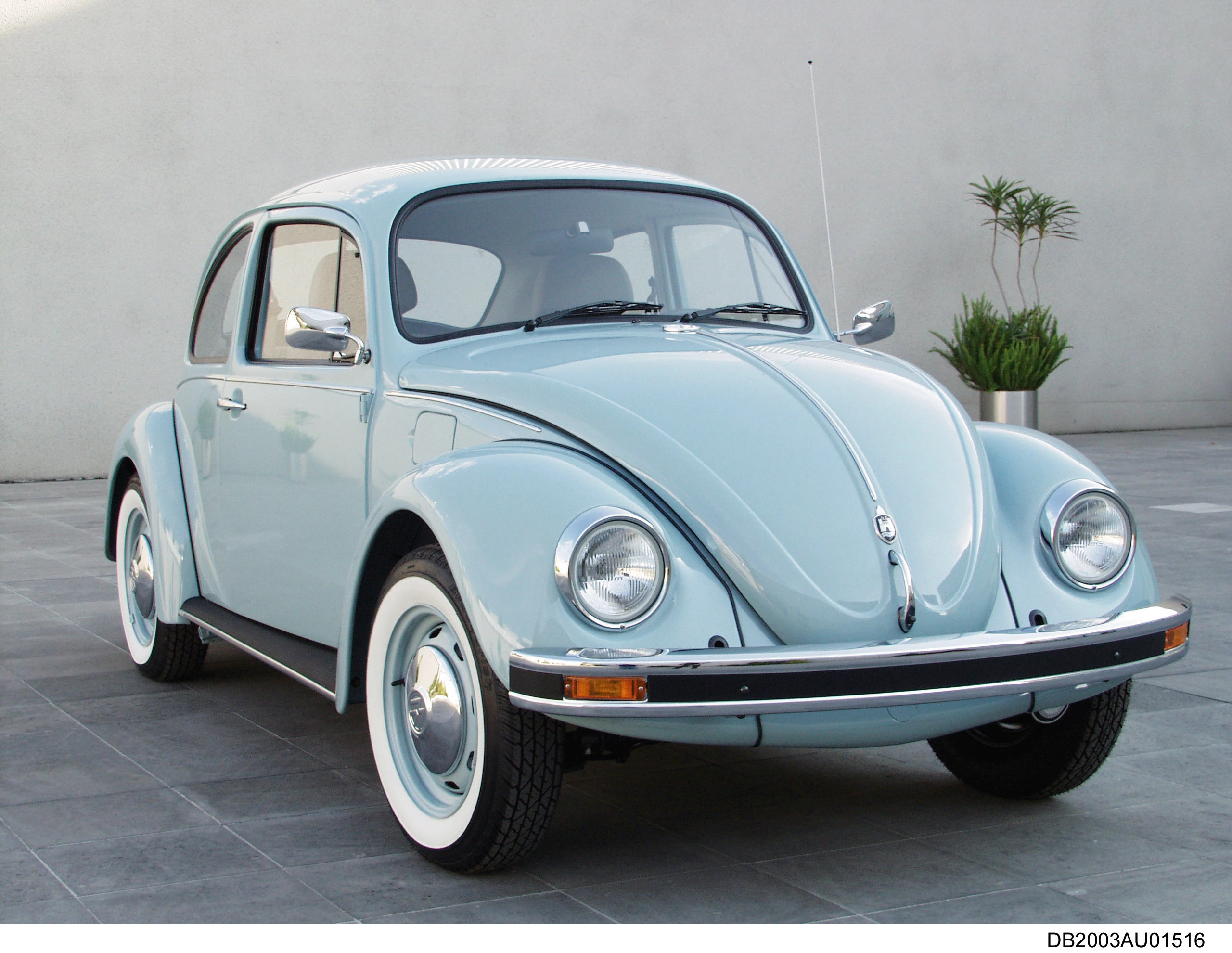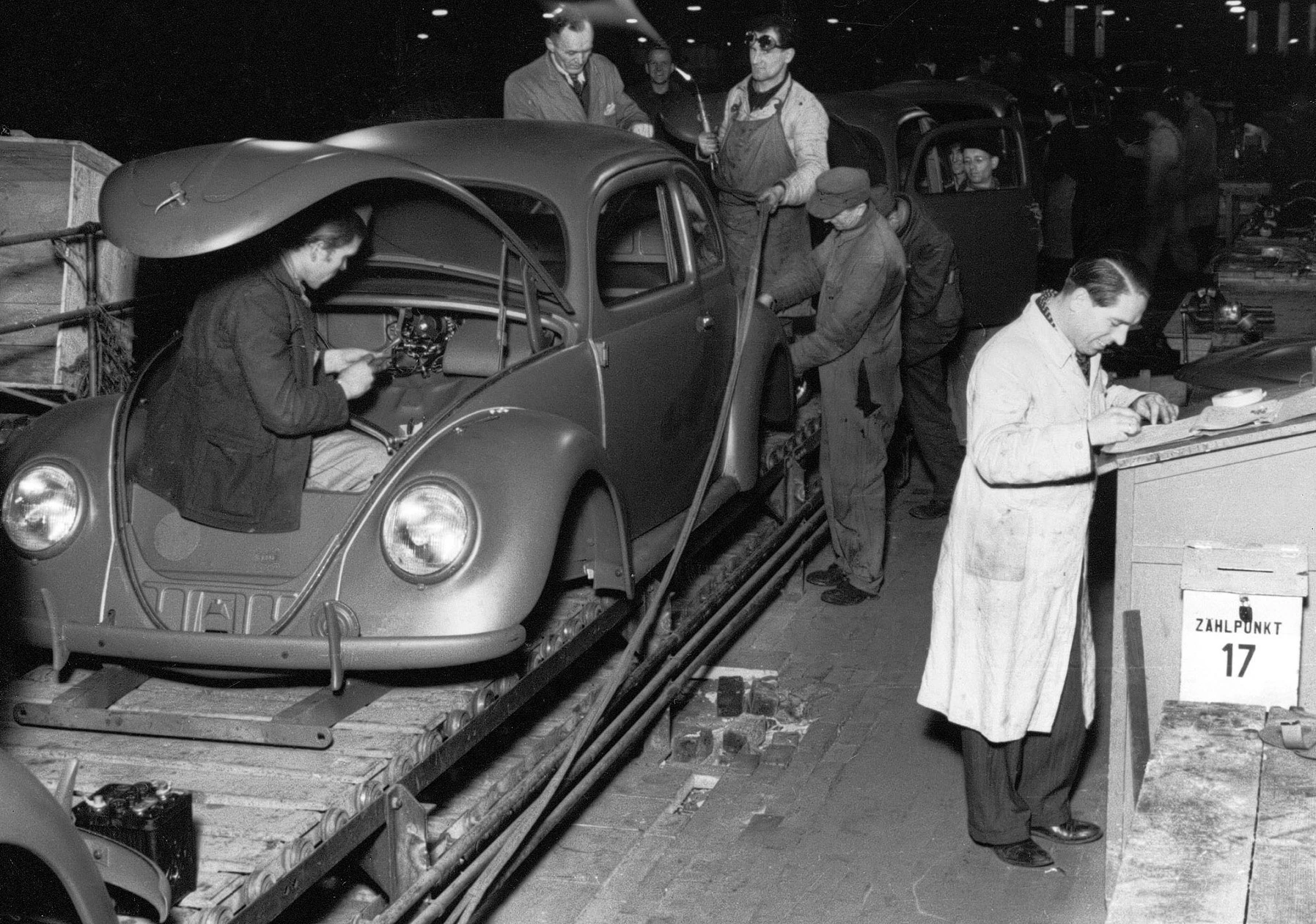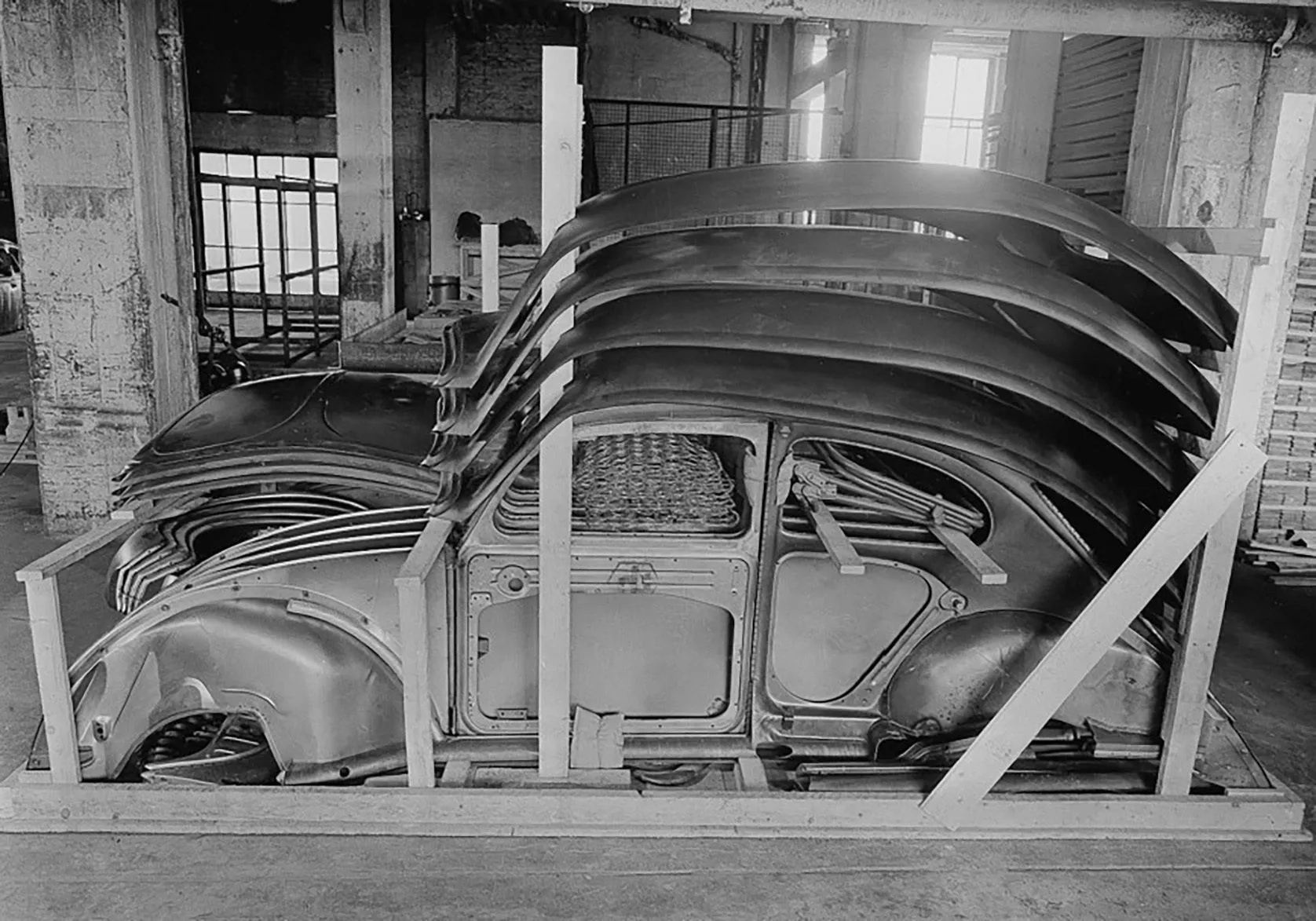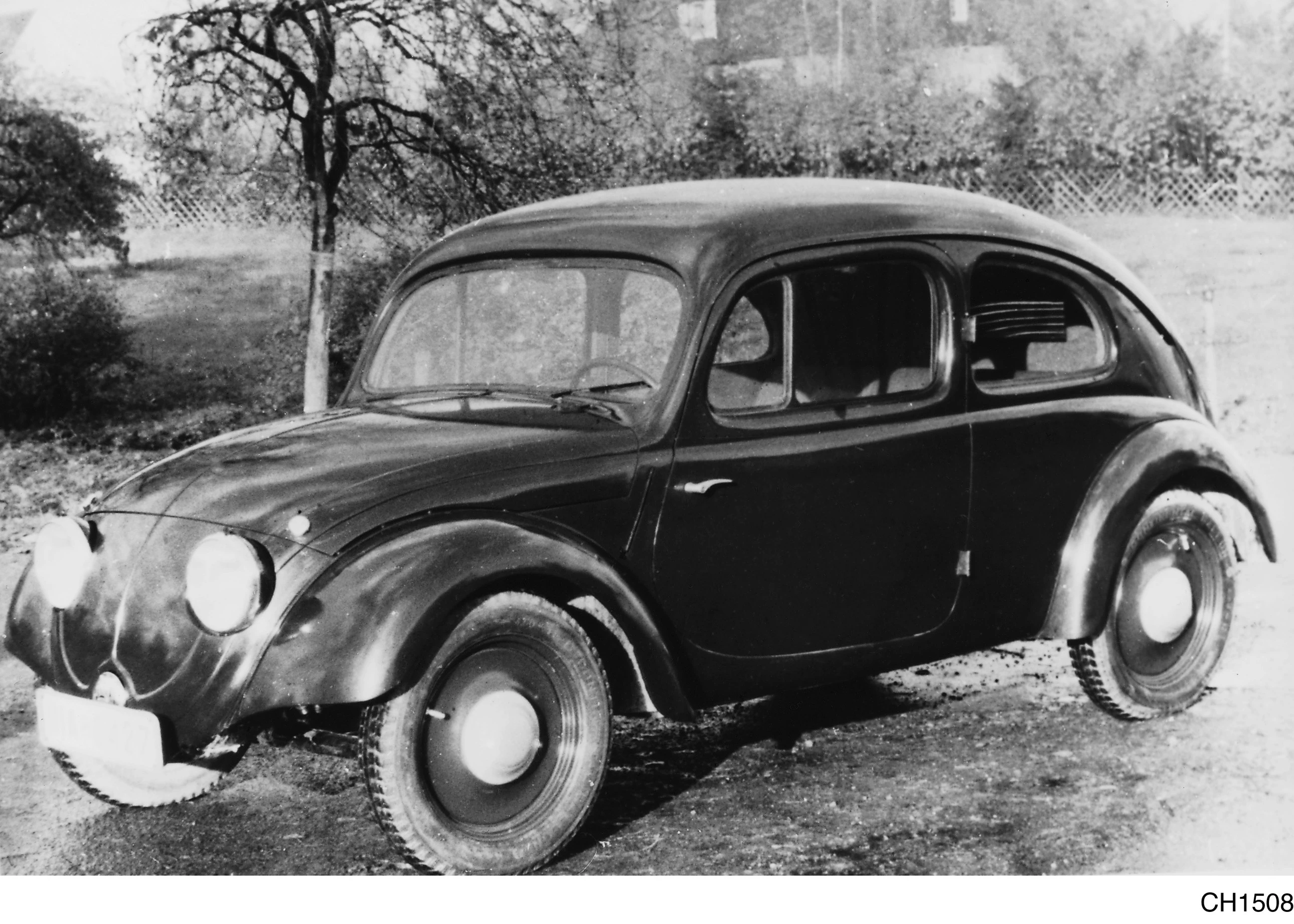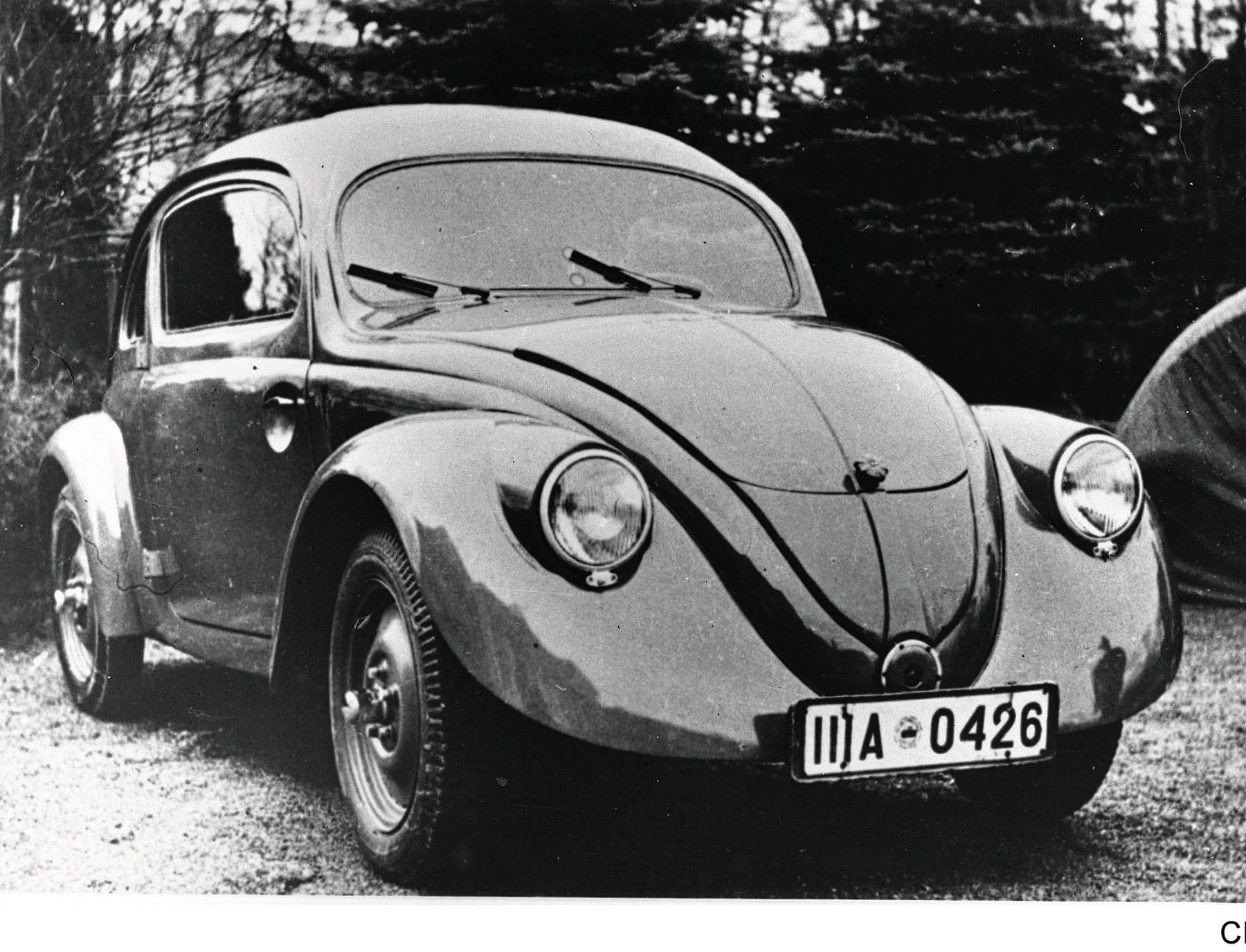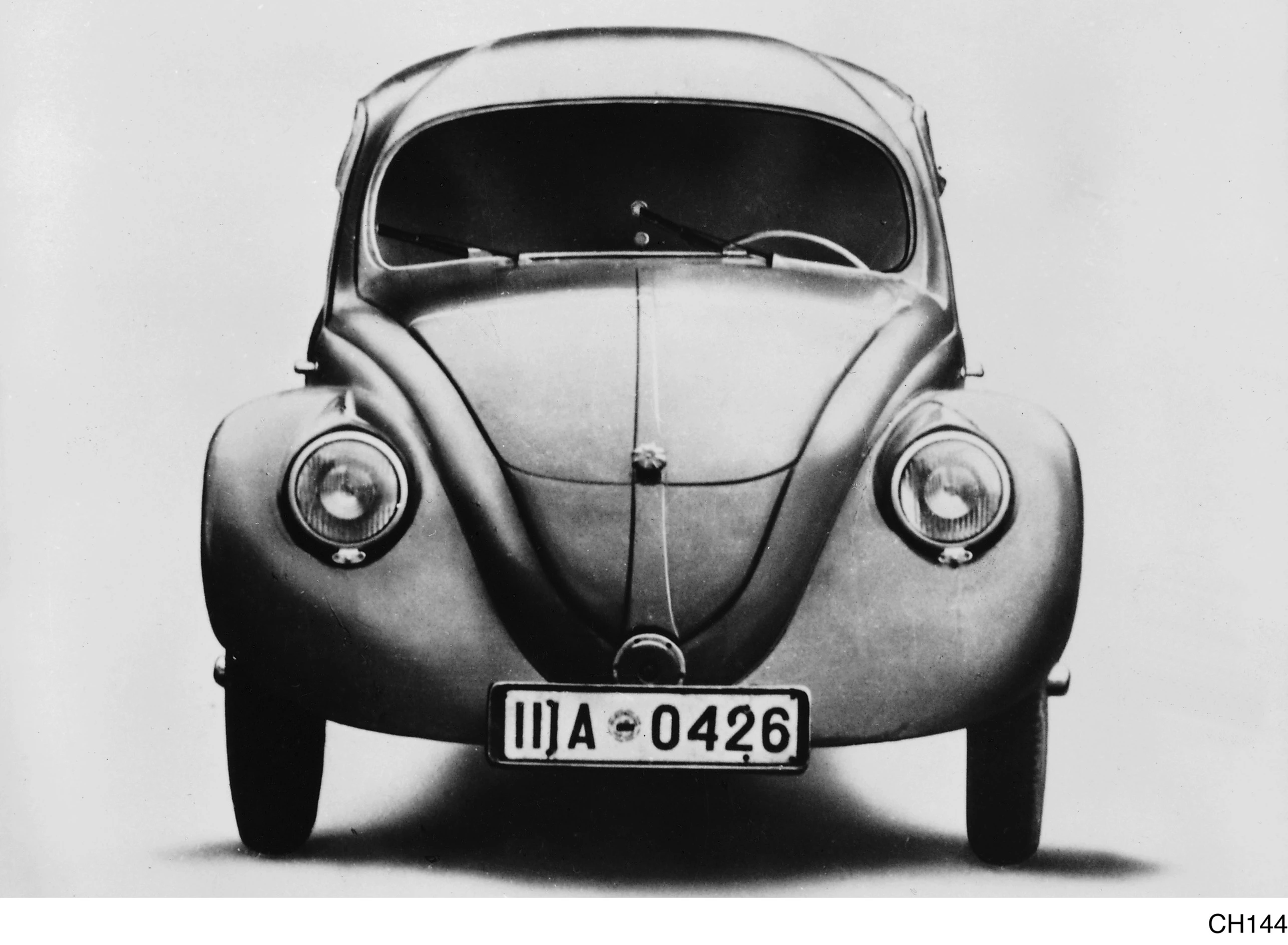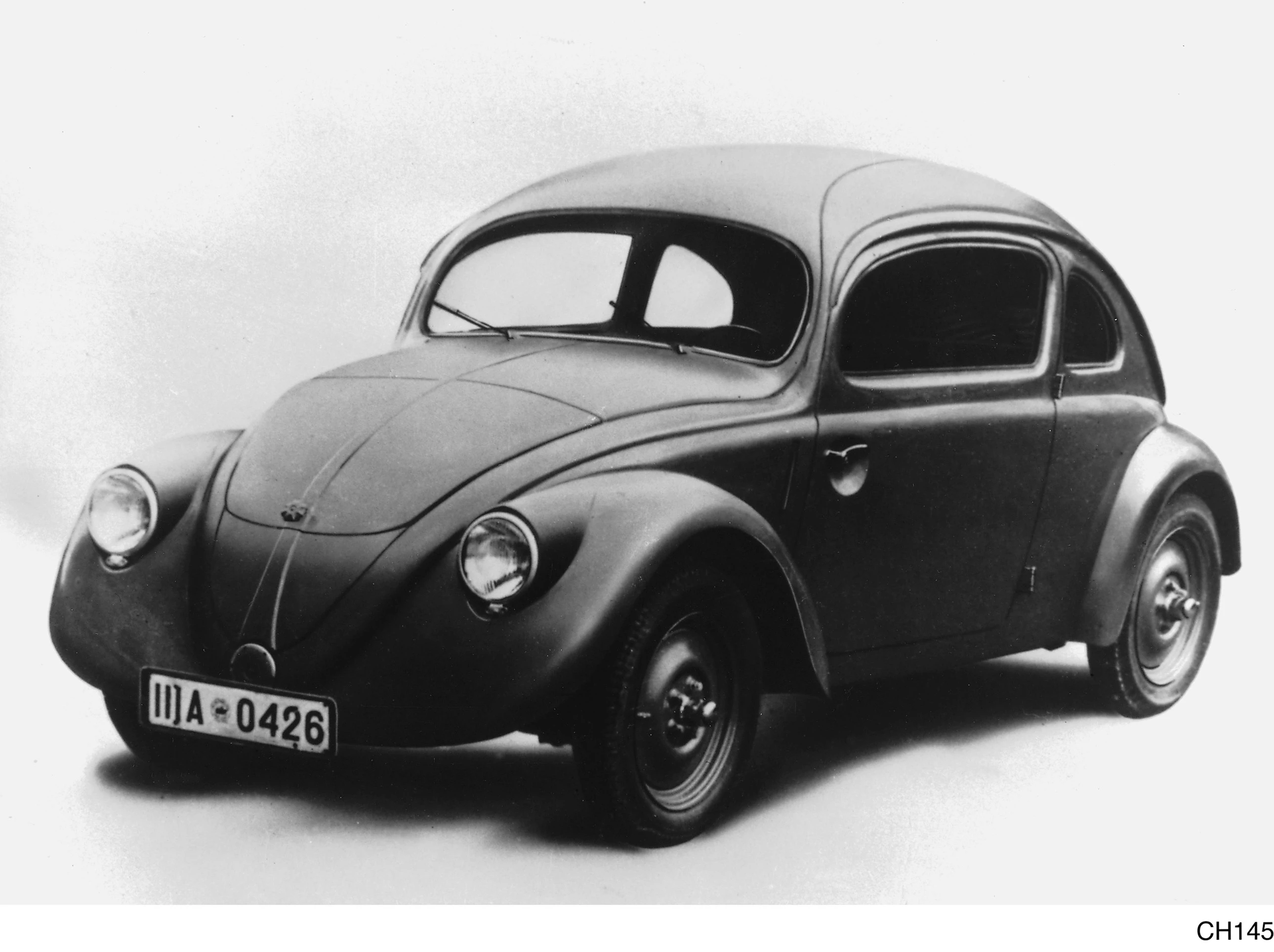The last Volkswagen Beetle rolled off the line in 2003 after more than six decades in production. One of the great game-changing automobiles, the quirky little sedan emerged from a dramatic birth to become the best-selling car in history, altered how small cars were seen, sparked a remarkable automotive cult, and even starred in its own film franchise.
Whether it's called the Beetle, the Bug, Käfer, Kever or Косτенурка, the Volkswagen Type 1 is one of the most recognizable cars ever to roll off the assembly line – and a lot of them did. By the time the last Beetle was built, there were 21,529,464 produced. To put that into perspective, the Ford Model T only reached 15 million units.
However, there's a lot more to the Beetle than a huge production run and a distinct silhouette. It's also a car with a story behind it that is as remarkable as it is seemingly improbable.Hitler's dream car
The Beetle began as an idea in the mind of Adolph Hitler for a project of his Kraft durch Freude (Strength Through Joy (KdF)) movement, which was part social program and part political propaganda.

KdF was intended to show off the new German prosperity, boost the lives of the working class to middle class standards, and provide new luxury and leisure products and services to the masses. This included building the new Autobahn high-speed motorway, introducing an inexpensive People's Radio, and setting up KdF summer camps, cinemas, concerts, resorts, and cruise ships where working class families could relax and play. As it turned out, all of this came at the price of submitting to a genocidal totalitarian regime with dreams of world conquest.
One of the most important parts of the KdF movement was a People's Car (Volkswagen) for workers whose biggest transportation ambition was to trade in their bicycle for a motorcycle. In late 1933, Hitler summoned the brilliant, but volatile automotive designer Ferdinand Porsche to discuss the new car and its design.
To make what would become the Beetle affordable to any working-class family, Hitler wanted his People's Car to cost under 1,000 Reichsmarks. It had to be small, but with enough interior space for two adults, three children, and their luggage, which was to be stowed under the bonnet and behind the rear seats.

It had to manage 62 mph (100 km/h), so it could ride easily on the new Autobahn system, and do 40 mpg (7 l/100 km). In addition, the car had to be simple, easy to maintain, and easy to get parts.
To power the car, Hitler insisted on an air-cooled rear-mounted engine. This was because German winters often saw the temperature drop below freezing and in the days before polyethylene glycol antifreeze became available this meant you needed a garage to keep it in overnight or wake up to a radiator full of ice.
The idea of such a People's Car wasn't new. In fact, the world's best-selling car before the Beetle came along was the Ford Model T. The Model T was a very different car, with a design aimed at the American farmer. It had an engine that could run on a wide variety of fuels, was easily maintained by basic tools that any blacksmith might have, a high ground clearance and wooden wheel spokes to deal with muddy, unpaved roads in poor condition, and a design that could be easily modified for a number of roles, including becoming a portable power source for field work.
Despite the differences, the Model T was Hitler's inspiration for the Beetle. He also saw Ford's car manufacturing plants with their new assembly line system as the model for the car industry of the new Germany. He wanted to imitate Ford and build a German version of Detroit that would rival the biggest American car makers.Designing the Beetle
The design for the Beetle was a collaboration between Porsche, who included ideas for an economy car he was already working on, and Hitler, who supplied ideas and sketches, which is surprising because he never learned to drive. Porsche also traveled to the US to visit the Ford plant in Detroit to study its layout and operation, and to recruit expatriate German car workers who wanted to return home.

The Beetle may look quaint and old-fashioned today, but in the 1930s, its streamlined profile was the height of futuristic design. Streamlining was all the rage during the interwar years. Not only were airplanes, locomotives, and cars given smooth lines to improve their aerodynamics, but so were pencil sharpeners, toasters, tea pots, radios, and telephones. On top of air flow considerations, streamlining the Beetle's body panels meant they could be stamped by machine and much less steel was needed.
Hitler himself was particularly keen on streamlining, saying that it should "look like a Beetle."
The final design that emerged was a two-door sedan featuring a flat front windscreen and two small rear windows. The panels and doors fit so tightly that the car was almost airtight, which made the doors hard to close because the compressed air acted like a spring. On the plus side, the Beetle could float for a short time.
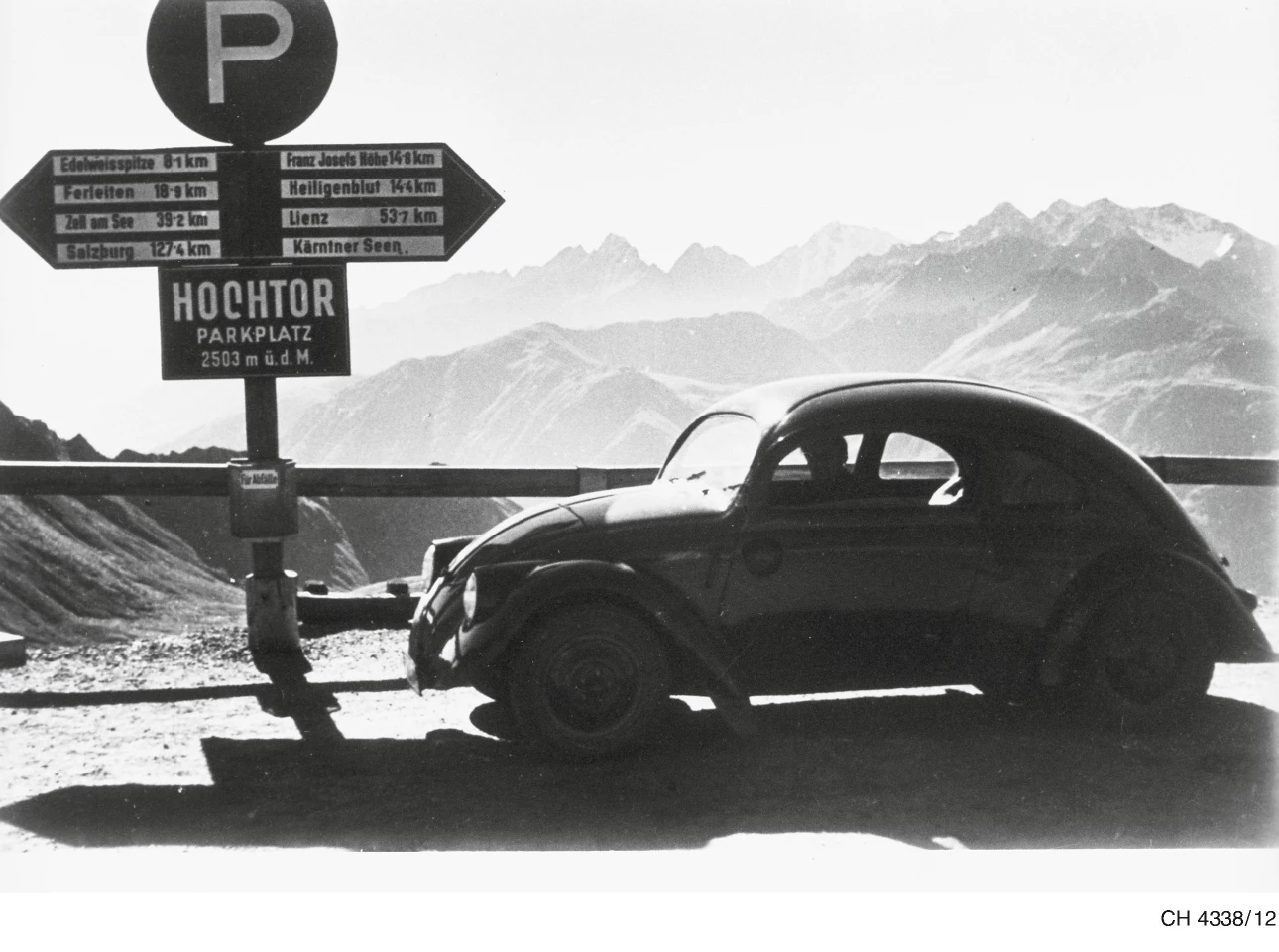
In the rear was the air-cooled engine in a flat-four configuration. This was called a Boxer engine because in action the pistons looked like two prizefighters bumping gloves before a bout. Made from a light alloy, it had very good cold starting ability because it only had to warm up the metal and oil, not a radiator full of water. In addition to helping in the winter, being air cooled meant the engine couldn't boil over in the summer while driving at high altitude through the Bavarian Alps.
Rear mounting and rear-wheel drive had its own advantages. It allowed for a smaller, simpler drive train, gave better traction on ice, and it left the lawn mower noise and most of the notorious machine smell behind. In addition, the engine could heat the car through a simple heat exchanger – not very efficient, but a big plus at a time when car heaters were a rare luxury item.
The Beetle could only manage 25 bhp, but the four-speed manual non-synchronized gearbox gave it very fast performance and high reliability. It also had Porsche's front stabilizer bar and suspension front and rear that used compact torsion bars instead of coil or leaf springs, which gave independent suspension at all wheels.
At the other end of the technological spectrum, the turn indicators used mechanical semaphores that stuck out like little wings, which must have made going around a corner interesting.
The only color available was blue gray.
War and the Beetle
Since the average German family couldn't afford to drop 990 Reichsmark, the final price, at one go, the Beetle could be bought through a savings book scheme. Each week, the family would purchase a five-mark stamp and put it in the book. When the book was full, you could pick up the car at the factory and drive it home. If you missed a payment, it was forfeit.
Unfortunately, no one actually got their Beetle. The design wasn't completed until 1938 and by then, Hitler had other things on his mind. Only a few hundred Beetles were built, and all of those went to military officers. As for the rest, the money collected from the savings book scheme wasn't used to deliver cars to the masses. Instead, Hitler trousered the lot to help pay for the Second World War.
During the war, the new Volkswagen factory at what is now Wolfsberg turned production to cranking out boxy, off-road military versions of the Beetle called the Kubelwagen, which carried three men and a machine gun instead of a family of five. Tens of thousands were produced despite the plant being subjected to repeated Allied bombings where three quarters of the facility was destroyed.
After the war, the Volkswagen plant was seized by the British, who intended to dismantle the works and ship them back to Britain as war reparations. The plant was under the command of Major Ivan Hirst, whose first job was to oversee the defusing of an unexploded bomb that was wedged in the works. If this one operation had been unsuccessful, the Beetle would have instantly faded into the obscurity of automotive history.

After the bomb was defused, Hirst noticed that there were these odd round cars on the site. Recognizing what these were, he proposed to offer the Beetle, and the factory to make it, to a British or American car maker free of charge.
The result was one of the worst business decisions ever. No British car maker wanted anything to do with the deal, and the Americans, especially Ford, hated the Beetle, calling it ugly and poorly designed. Only the French showed any interest, but a lobby of French car makers caused the deal to fall through.
The only thing that saved the plant was Hirst lining up a deal to provide 20,000 cars to the British Army's occupation force, which was desperately in need of reliable transport. The assembly line reopened on December 27, 1945 and went into full production in 1946. By March, 1,000 cars a month in Army khaki were rolling out. By 1947, Volkswagens, as the cars were now known, began to be produced for the civilian market with chromed bumpers, hubcaps, and trim.Back in business
In 1949, the operation was given back to the German government as a private company called Volkswagen. A search was on to find someone to run it, but there were no takers for the job. Finally, Heinz Nordhoff was appointed director of the Volkswagen factory. He adopted a policy of keeping the Beetle as it is rather than making radical changes and an emphasis on getting it into the export as well as the domestic market as a way to bring in hard currency for the bankrupt Germany.

He was especially keen to crack the American market, first through exports and then setting up a US subsidiary. As the Volkswagen spread to the Netherlands and other countries, it acquired an impressive list of nicknames, including the Beetle, which the company adopted for marketing purposes because it was a bit catchier than the Volkswagen Type 1.
As the Beetle grew in popularity, so did the Volkswagen plant physically, which would go on to be the single largest car factory in the world, containing some of the most advanced automated systems.
Though the basic design of the Beetle seemed to change little, it was being constantly tweaked and refined so that an expert Volkswagen spotter can tell the year of the seemingly identical cars by the rear windows, brakes, and angle of the head lamps. The engine was boosted to 40 bhp for a giddy top speed of 71 mph (115 km/h), a four-speed semi automatic gearbox was introduced, and the whole car was gradually revised until almost every single component was replaced.
The cult of the Beetle
By the 1960s, the Beetle had penetrated deep into the US market, where it was regarded as a relatively new car even though the design was decades old. It appealed to the young, educated middle class with disposable income, was relatively inexpensive to purchase and run, and it looked very different, so it stood out on the curb.

It was also a change from the American cars, which tended to be gigantic land yachts with mushy suspension and a massive V8 engine that spent almost all their time running at a fraction of their capacity, while the Beetle ran flat out every time it hit the on ramp, making it exciting to drive.
Soon, a cult of the Beetle developed as it was adopted by beatniks, hippies, and other non-conformists, who either didn't know or didn't care about its association with the Nazis. It was painted in wild psychedelic colors, crammed full of college students trying to set a new record, and was the basis of an incredibly successful self-deprecating advertising campaign that used its supposed shortcomings to sell it.
It even went to Hollywood, where it starred in the Disney feature Herbie the Love Bug, followed by five sequels and a television series. The Batmobile and the Aston Martin DB5 may have been movie stars in their own right, but they ever managed to get the title role.
The Beetle fades away
By the 1970s, the Beetle was past its best days. It was imitated around the world and the Japanese, French, and British were coming out with their own compacts that were pushing into the highly competitive market. The Beetle wasn't looking so much ironic and kitschy as just plain old-fashioned, and motorists were expected not only more modern styling, but more performance, comfort, safety, and a raft of mod cons.
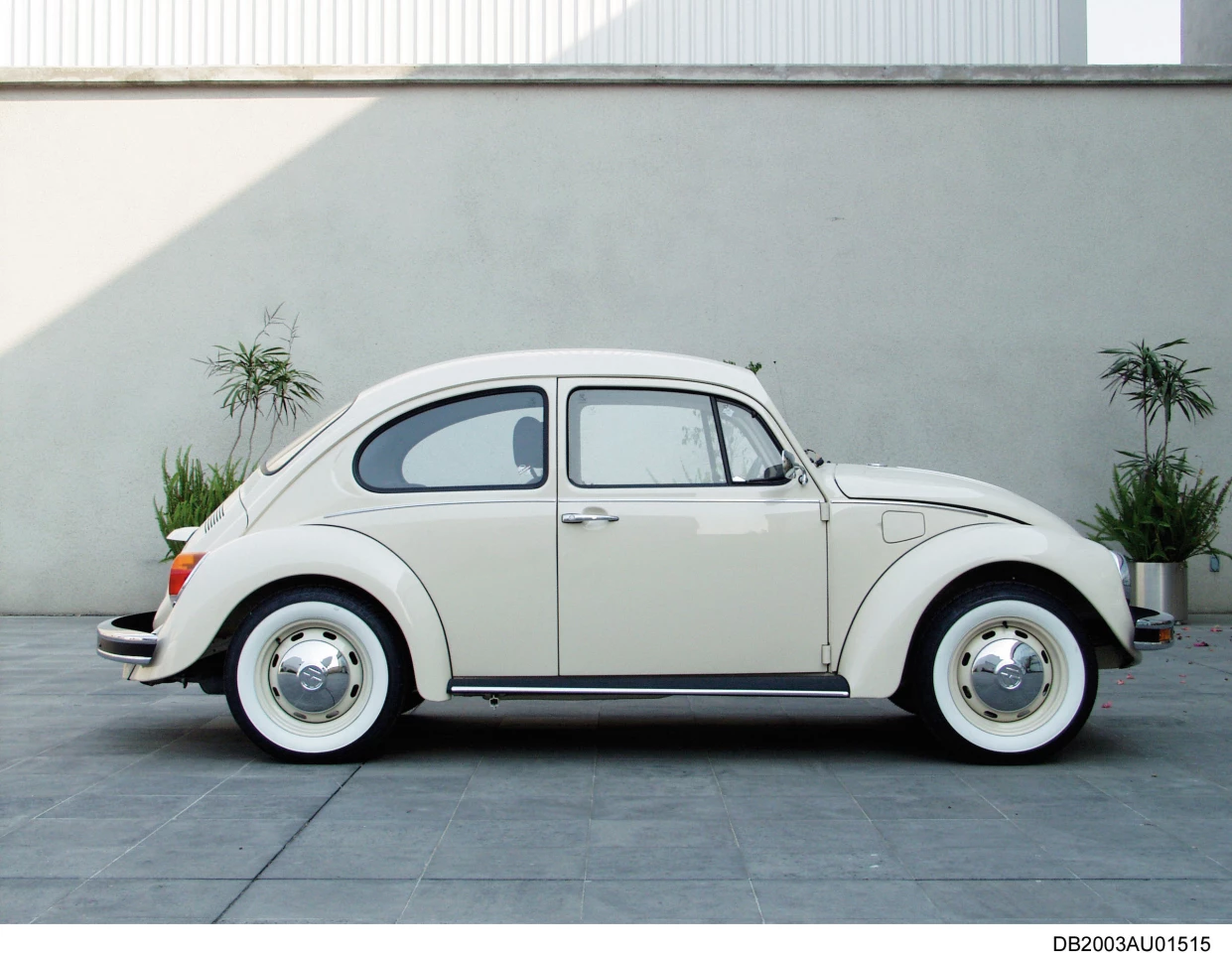
Volkswagen turned to the Golf as the successor to the Beetle, and shifted its production line to Brazil and Mexico. A contemporary "New Beetle" was produced from 1998-2010 and a third-generation design ran from 2012-2019, but it is the original-shape Beetle that stands tall in our collective consciousness. When the last one rolled out in Mexico in 2003, it left behind a huge legacy. Not only was it the best-selling car in history, it was also instrumental in saving the postwar German economy and sparked the German economic miracle that helped win the Cold War and gave birth to the modern EU.
For all its modest appearance, the Beetle proved to be a very long lived bit of lightning in a bottle that the car world hasn't quite been able to recapture. Perhaps that's why a car that never seemed to change its appearance, never had a speck of glamour about it, and definitely would never be mistaken for a supercar, still stands out as one of the most remarkable and recognizable cars ever made.
